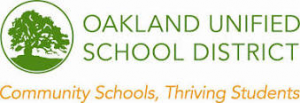 The Oakland Unified School District reports significant positive results using restorative justice at many of their sites, including elementary, middle, and high schools.
The Oakland Unified School District reports significant positive results using restorative justice at many of their sites, including elementary, middle, and high schools.
I’m only on page 29 of the 85 page report, but I just couldn’t wait to share some of the significant, positive results with educators, parents, and those I’m training in Restorative Practices!
In February I discovered the “new” September 2014 report Restorative Justice in Oakland Schools Implementation and Impacts Report: An Effective Strategy to Reduce Radically Disproportionate Discipline, Suspension and Improve Academic Outcomes.
This report was prepared by the Office of Civil Rights, U.S. Department of Education. For those interested in methodology, the study capitalized on existing secondary data from multiple sources. Researchers used the existing student information system (AERIES) and the California Department of Education suspension and expulsion data files (p. iv)
A combination of qualitative and quantitative data was used to answer key questions. Mixed methods included focus groups RJ implementation survey, one-on-one semi-structured interviews, and informal discussions over the past year. Input was obtained from key stakeholders including students, teachers, RJ coordinators, Principals, Assistant Principals, and Program Manager (p. 61).
Restorative Justice (RJ) began in Oakland Unified School District 10 years ago with one site. During the 2013-2014 school year they had 24 sites. An implementation survey by 23 of the 24 sites reported that over 90% of their staff has been practicing RJ for less than three years.
Since five of the ten school site teams Marty Villa (Stanislaus County Youth for Christ) and I are training in Modesto, California are in their second year, these sites are only one year behind 90% of Oakland’s staff with three years experience. This observation made me even more curious to discover their results. The survey also indicated, “Over half of the staff said that it is very easy or easy to conduct restorative practices” (p. iv).
The report states results educators can get excited about. The impact of RJ participation addressed three areas: Reduced referrals for disruptive behaviors, repaired harm/conflict, and built developmental assets.
- Eighty-eight percent of teachers found that Restorative Practices (RP) were very or somewhat helpful in managing difficult student behaviors in their classrooms while 63% of staff surveys note that RJ has improved the way students resolve conflicts not only with other students, but with adults (p. v).
- One tenet of RP in Schools is making things right. One strategy Oakland uses is called Harm Circles. Almost 76% of the students successfully repaired the harm or resolved their conflict (p. v).
I’m frequently asked, “Do Restorative Practices really work?” I answer by sharing stories about students and staff that are changing the status quo. The report answers this question by stating,
Students in restorative justice circles report an enhanced ability to understand peers, manage emotions, have greater empathy, resolve conflict with parents, improve home environment, and maintain positive relationships with peers. They are learning life skills and sustainable conflict management skills (p. v).
These students improved their developmental assets, all while still engaged in the K-12 Common Core Standards designed to prepare them for college and careers.
Many school districts’ personnel express interest in RP when they discover the possibility of reducing suspension and expulsion rates. Sixty percent of Oakland Unified School District staff believes RP did just that. Suspensions declined significantly over the past 3 years (p. vi).
The most significant decline has been for African American students suspended for disruption/willful defiance, down from 1,050 to 630, a decrease of 40% or 420 fewer suspensions in only one year (p. vi).
Not only did suspension rates decrease, but academic outcomes improved. Chronic absenteeism in a middle school with RJ dropped by 24% compared to an increase in non-RJ middle schools of 62.3% (p. vi). I had to re-read that one a few times. I kept interrupting my husband to read aloud these vital statistics. Even he inquired, “What’s the name of this report? I need to get it.”
And what happens when students attend more school days? Reading levels increase, dropout rates decline, and graduation rates increase. Here are some statistics to support their findings:
- The Scholastic Reading Inventory (SRI) reading levels in grade nine doubled in RJ high schools an average of 14% to 33%. This was an increase of 128%, compared to 11% in non-RJ high schools.
- School drop-out rates declined 56% from 2010-2013 in RJ high schools compared to 17% for non-RJ high schools.
- For OUSD public schools with RJ in schools, four-year graduation rates increased significantly in the past 3-years. Researchers report a cumulative increase of 60% for RJ schools compared to 7% for non-RJ schools (p. vi).
Statistics can be manipulated by a wide variety of methods to obtain positive results. However, if you read more of the full report, you will discover substantial documentation for their findings. I recommend that educators, parents, and community members download the 85 page report or the nine-page Executive Summary using the link below.
What do you think? Do Restorative Practices make a difference in our K-12 schools?
Source:
Jain, Sonia Dr.PH, Henrissa Bassey, M.P.H., Martha A. Brown, M.Ed, Preety Kalra, Ph.D. Restorative Justice in Oakland Schools Implementation and Impacts Report: An Effective Strategy to Reduce Radically Disproportionate Discipline, Suspension and Improve Academic Outcomes. Prepared for the Office of Civil Rights, U.S. Department of Education, September 2014. OUSD Restorative Justice Home Page www.ousd.k12.ca.us/restorativejustice
